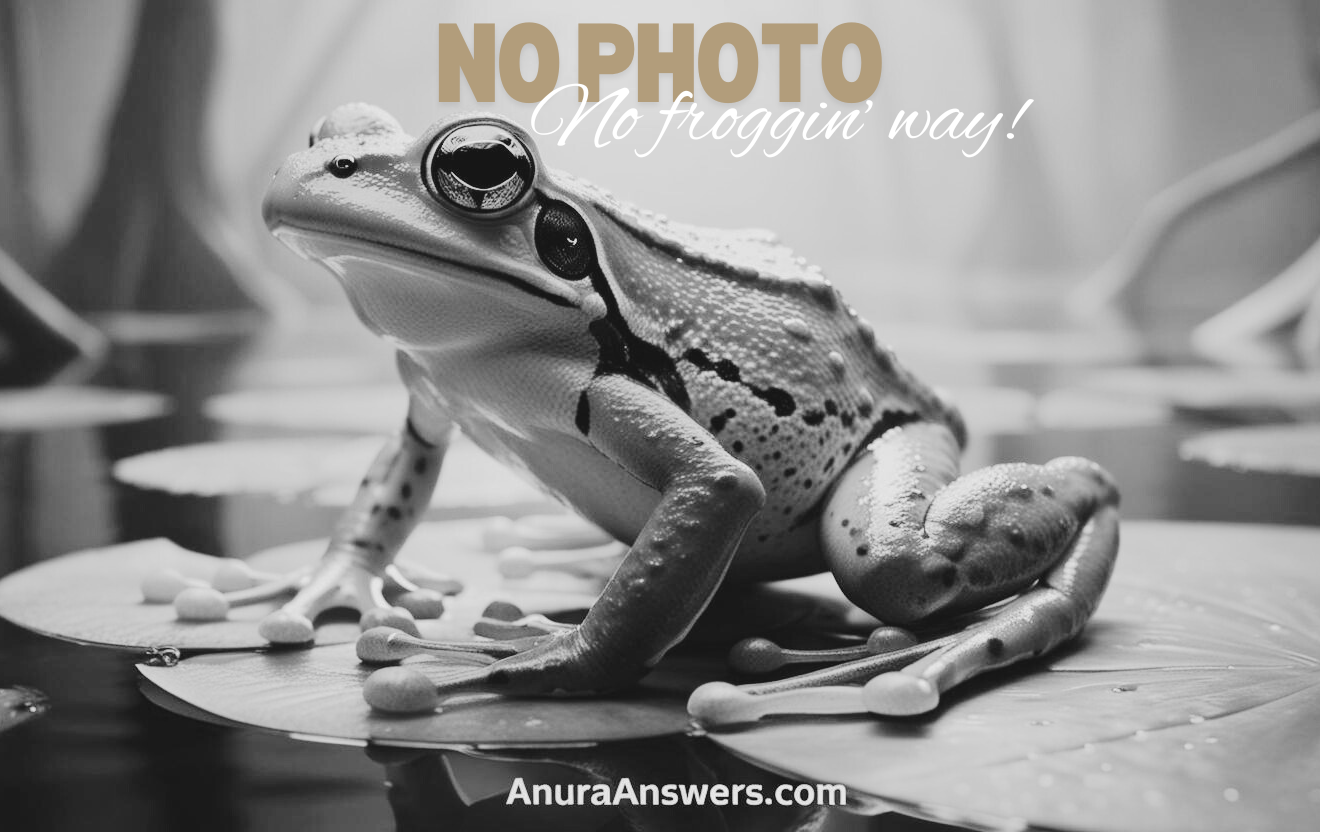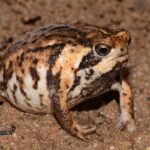- Introduction: Discovering Brachycephalus toby
- Taxonomy and Classification of Brachycephalus toby
- Natural Habitat: The Secret Realms of the Atlantic Forest
- Physical Characteristics: An Unforgettable Tiny Jewel
- Behavior and Life Cycle: A Symphony in Miniature
- Ecological Role: A Tiny Yet Vital Component
- Threats and Conservation Challenges
- Cultural and Scientific Significance
- Conclusion: Protecting a Tiny Treasure
Introduction: Discovering Brachycephalus toby#
Hidden among the dense leaf-litter and mossy undergrowth of Brazil’s Atlantic Rainforest mountains thrives a creature so diminutive and vibrant, it captures the imagination at first glance—the enigmatic Brachycephalus toby. Known affectionately among herpetologists and naturalists as Toby’s pumpkin toadlet, this tiny amphibian packs a surprising punch of color, audacity, and natural marvel. Measuring just a fraction of an inch, Brachycephalus toby reminds us of nature’s incredible creative range, revealing that extraordinary beauty and adaptability often lie within the smallest encounters.
The pumpkin toadlets of the genus Brachycephalus have long been scientifically intriguing due to their small size, vivid colors, and unique biology. But Brachycephalus toby, described scientifically only recently, has quickly become a symbol of hidden biodiversity—the vital yet vulnerable gems that dwell within increasingly threatened habitats.
Taxonomy and Classification of Brachycephalus toby#
Brachycephalus toby belongs to the amphibian family Brachycephalidae, a group customarily referred to as pumpkin toadlets or flea-frogs due to their tiny stature. Officially recognized in 2015 by a dedicated team of Brazilian herpetologists, Brachycephalus toby is named in honor of the Toby Fund, a project supporting amphibian biodiversity conservation.
The genus Brachycephalus comprises more than thirty known species, each adapted to specific isolated mountaintops, making them striking examples of evolutionary isolation and specialization. Closely related species like Brachycephalus ephippium and Brachycephalus pitanga also exhibit vibrant colors and microhabitat specialization. However, even within this imaginative genus, Brachycephalus toby possesses distinctive morphological features and ecological correlations, clearly separating it from its closest relatives.
Natural Habitat: The Secret Realms of the Atlantic Forest#
Brachycephalus toby inhabits sympatric patches of high-altitude, mist-covered cloud forests of the Serra do Mar, nestled within Brazil’s Atlantic Rainforest biome. These enclaves—often no larger than a few acres—provide the humid microhabitat essential for this toadlet’s delicate biology. Beneath towering trees draped in epiphytes and mosses, the undergrowth forms a complex tapestry of perpetually damp and shaded leaf-litter. Here, amid the decaying leaves and tangled roots, lies the ideal niche for Toby’s pumpkin toadlet.
This small but extraordinary environment embodies a particular ecological balance. The constant mist, high humidity, and stable temperatures sustain diverse fungi, minute insects, and tiny arthropods—the predominant prey items for Brachycephalus toby. Such highly specialized habitats highlight the delicate relationship between toadlet populations and the health of their native forests. Small climatic changes or habitat disturbance could disrupt the fragile existence these amphibians have established.
Physical Characteristics: An Unforgettable Tiny Jewel#
The vibrant colors of Brachycephalus toby can arrest attention instantly. Sporting a striking orange to yellowish-orange hue covering its rounded, stout body, the frog resembles a miniature, jewel-toned pumpkin hidden among forest detritus. Its small size—just about 1 centimeter (barely half an inch)—ranks it among the smallest known vertebrates on Earth.
The brilliant coloration serves a clear ecological function: aposematic signaling, or warning colors, highlighting its skin’s potent defensive toxins. These specialized chemical defenses discourage predation, allowing this minuscule amphibian to flourish despite its frail appearance. The skin texture, slightly granular and warty, also aids its camouflage, helping it blend seamlessly with colorful lichens, decomposing leaves, and diverse fungi carpeting its habitat.
Behavior and Life Cycle: A Symphony in Miniature#
Feeding and Predation#
Brachycephalus toby hunts predominantly during the day, quietly navigating the leaf litter to consume small prey, such as mites, springtails, tiny beetles, and ants. Its diminutive stature restricts prey choices to micro-invertebrates, yet it effectively maintains energy balance due to its extraordinarily efficient metabolism. The toadlet patiently ambushes prey items, striking swiftly and silently before retreating to safety beneath leaf cover, making predation both efficient and discreet.
Mating Rituals and Reproduction#
Reproductive behaviors—unique and enchanting among many Brachycephalus species—are finely tuned to climate conditions. During the rainy season, male toadlets produce gentle chirping calls, a delicate acoustic symphony barely audible to human ears. These calls attract receptive females, initiating courtship that unfolds beneath the protective cloak of forest vegetation.
Brachycephalus toby exhibits direct development, bypassing the traditional aquatic tadpole stage common in many amphibians. Instead, tiny terrestrial eggs develop directly into miniature froglets. This adaptation is essential for life in high-altitude forests, where standing water is often scarce. Once laid beneath moist leaf-litter, the tiny eggs hatch days later, revealing fully formed, independent juveniles no larger than a grain of rice.
Ecological Role: A Tiny Yet Vital Component#
Though exceedingly small, Brachycephalus toby holds an essential role within its ecosystem. As both predator and prey, this amphibian contributes substantially to food web stability. It regulates populations of tiny arthropods, supporting the decomposition process crucial to nutrient cycling within forest soils. Simultaneously, the abundance and health of these toadlets provide an invaluable indicator to ecologists about the condition and resilience of the Atlantic Rainforest ecosystem. In essence, their well-being signals a thriving, balanced habitat.
Threats and Conservation Challenges#
Despite their ecological importance, Brachycephalus toby faces severe threats largely stemming from human activity. Deforestation, agriculture encroachment, logging, urban expansion, and climate change increasingly compromise the integrity of their isolated habitats. Each forest patch lost not only disrupts resident toadlet populations but also isolates fragmented habitats, impeding gene flow and making surviving populations highly vulnerable.
Officially classified by the International Union for Conservation of Nature (IUCN) as “Data Deficient”—largely due to limited distribution information—Brachycephalus toby highlights the need for intensified field research, habitat monitoring, and conservation actions. The lack of clear data underscores the urgency to direct resources towards understanding and conserving these delicate amphibians before irreversible damage occurs.
Cultural and Scientific Significance#
Although relatively recently discovered, the colorful pumpkin toadlets have quickly captured the imagination of both scientists and the broader public. Indigenous communities have long understood the intrinsic link between small amphibians and ecosystem health, viewing these diminutive animals as symbols of nature’s purity and balance.
From a scientific viewpoint, Brachycephalus toby has become immensely valuable for studying evolutionary biology, biogeography, and pharmacology. Scientists have begun investigating chemical compounds within their skin for medicinal properties potentially useful in future treatments, highlighting the essential need for preserving species diversity—not only from a moral perspective but from a deeply pragmatic one as well.
Conclusion: Protecting a Tiny Treasure#
Brachycephalus toby, quiet ambassador of Brazil’s hidden biodiversity, teaches us a vital conservation lesson: that even the tiniest inhabitants contribute significantly to planetary health. As caretakers of diverse ecosystems, it is our responsibility to safeguard these remarkable living treasures for the future.
Each one of us can act—by staying informed, supporting local and international conservation organizations, or adding voices to collective action campaigns—to ensure creatures such as Toby’s pumpkin toadlet continue enchanting new generations. A thriving, biodiverse future depends upon acknowledging, understanding, and protecting not just the charismatic megafauna that we easily admire, but also the lesser-known marvels like Brachycephalus toby—tiny animals whispering profound messages about sustainability, balance, and interconnected life.







